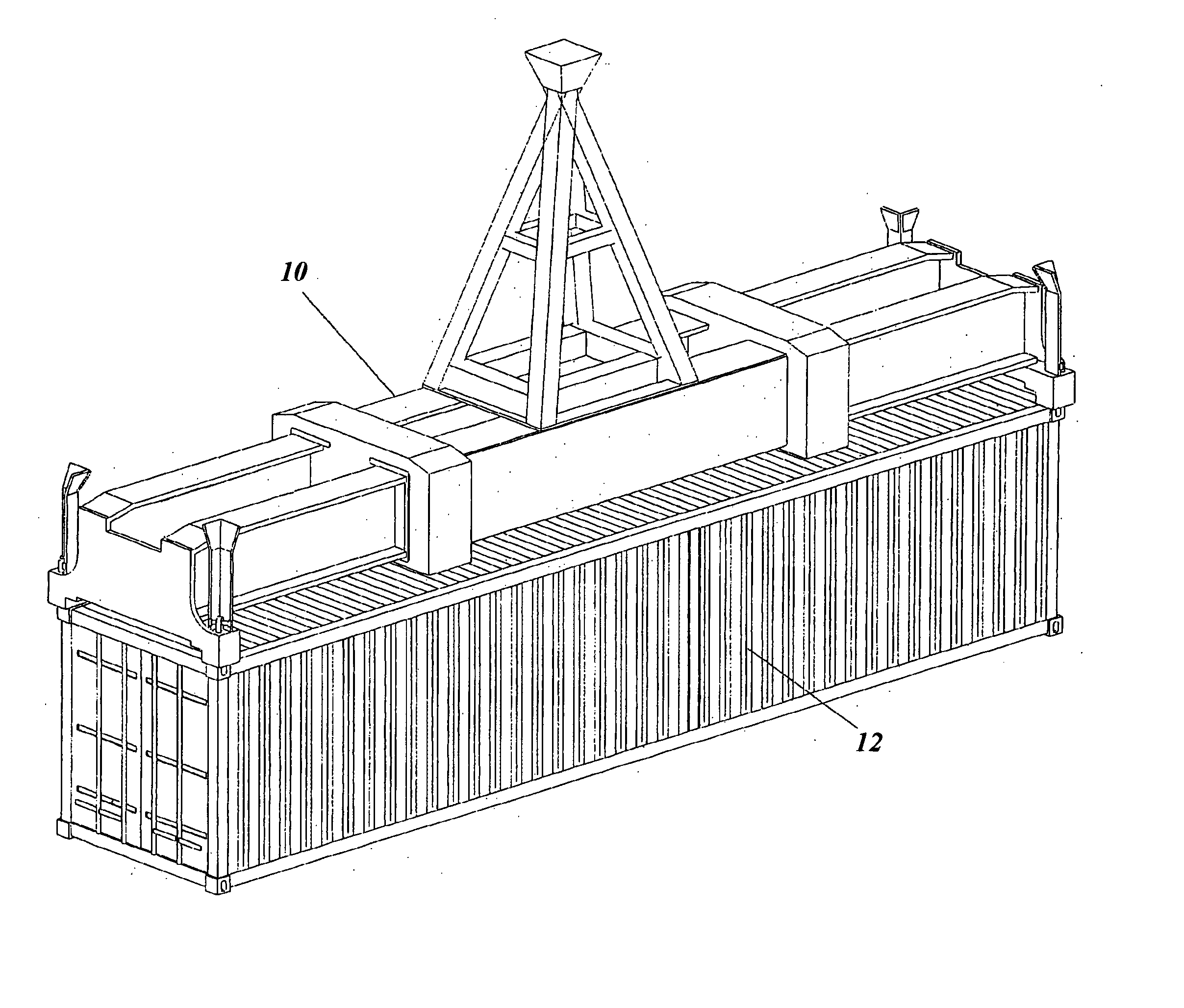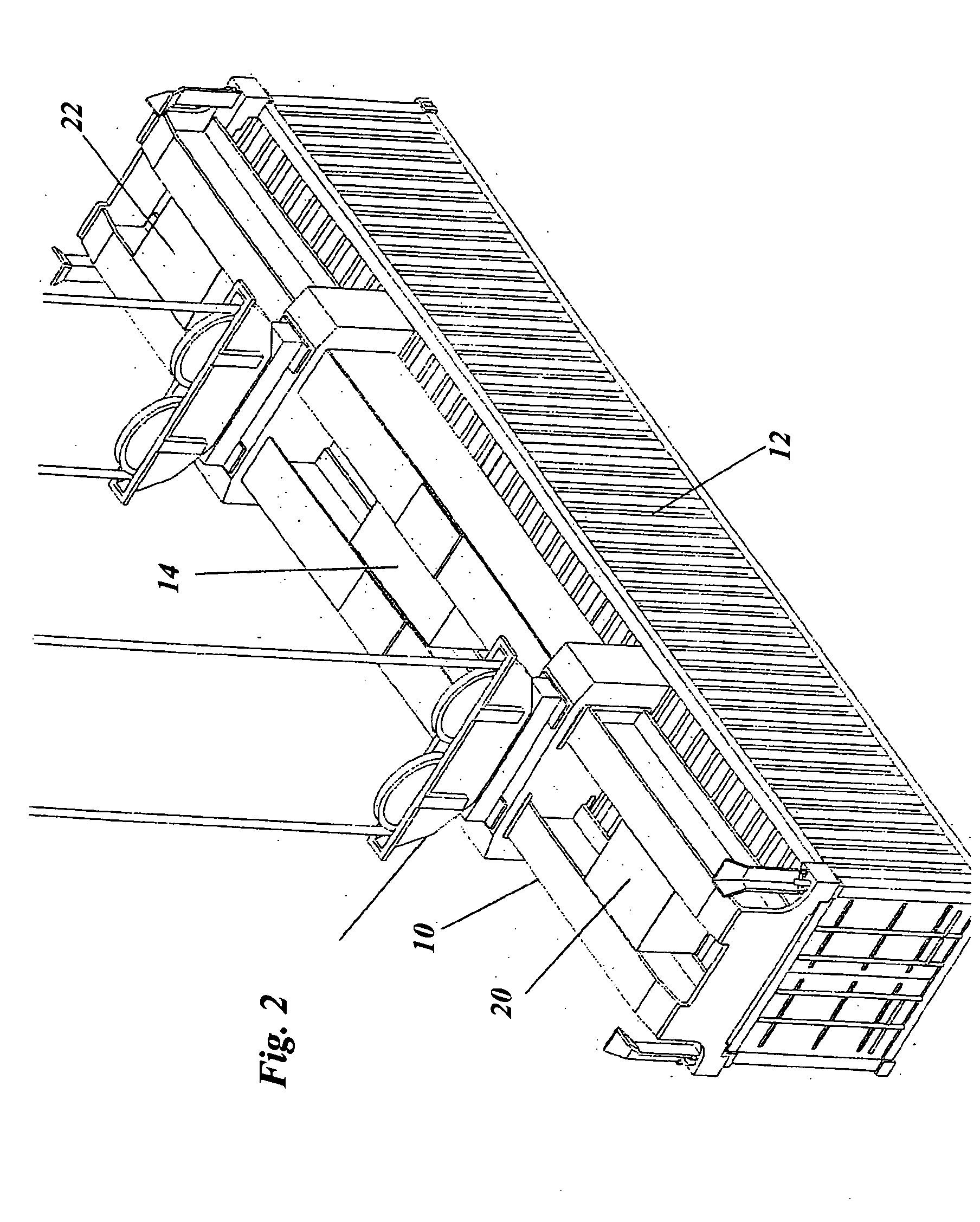Inverse ratio of gamma-ray and neutron emissions in the detection of radiation shielding of containers
a technology of radiation shielding and gamma-ray emission, which is applied in the direction of fire alarm radiation actuation, instruments, fire alarms, etc., can solve the problems of inability to separate sources of radiation, harmful to human beings, and thus inacceptable in the work environment, and radiation, including x-rays, can also be harmful to some contents in the container, so as to eliminate disruption and instability
- Summary
- Abstract
- Description
- Claims
- Application Information
AI Technical Summary
Benefits of technology
Problems solved by technology
Method used
Image
Examples
Embodiment Construction
[0035] Referring now to FIGS. 1-2, there is shown a hoist attachment 10 and a container 12 being carried by the hoist attachment 10 in a conventional manner. The hoist attachment 10 is of the type typically used with a container crane, although any type of hoist attachment may be used. The hoist attachment 10 is adapted to carry at least one housing 14.
[0036] With further reference to FIG. 3, the housing 14 includes therein at least one gamma-ray detector 16 and at least one neutron detector 18, each of which may be a commercially available detector. The gamma-ray detector 16 and the neutron detector 18 are disposed in the housing 14 to be proximal the container 12 when engaged by the hoist attachment 10 and further arranged therein to detect respectively the gamma-ray and neutron emissions from the container 12 when so engaged.
[0037] The hoist attachment 10 may further include additional housings 20, 22, similar to housing 14, each of which may also include at least one gamma-ray...
PUM
 Login to View More
Login to View More Abstract
Description
Claims
Application Information
 Login to View More
Login to View More - R&D
- Intellectual Property
- Life Sciences
- Materials
- Tech Scout
- Unparalleled Data Quality
- Higher Quality Content
- 60% Fewer Hallucinations
Browse by: Latest US Patents, China's latest patents, Technical Efficacy Thesaurus, Application Domain, Technology Topic, Popular Technical Reports.
© 2025 PatSnap. All rights reserved.Legal|Privacy policy|Modern Slavery Act Transparency Statement|Sitemap|About US| Contact US: help@patsnap.com



